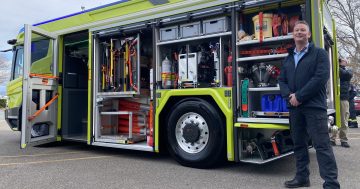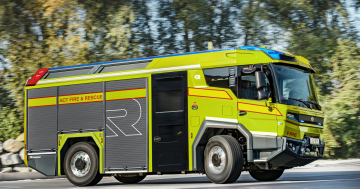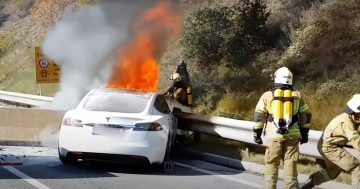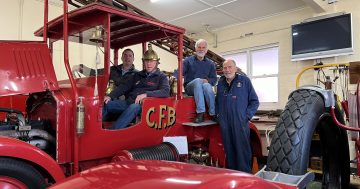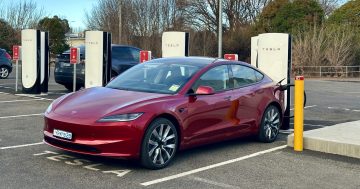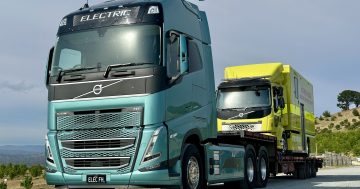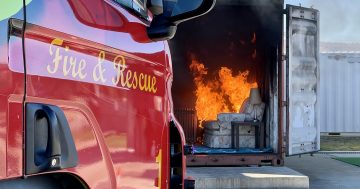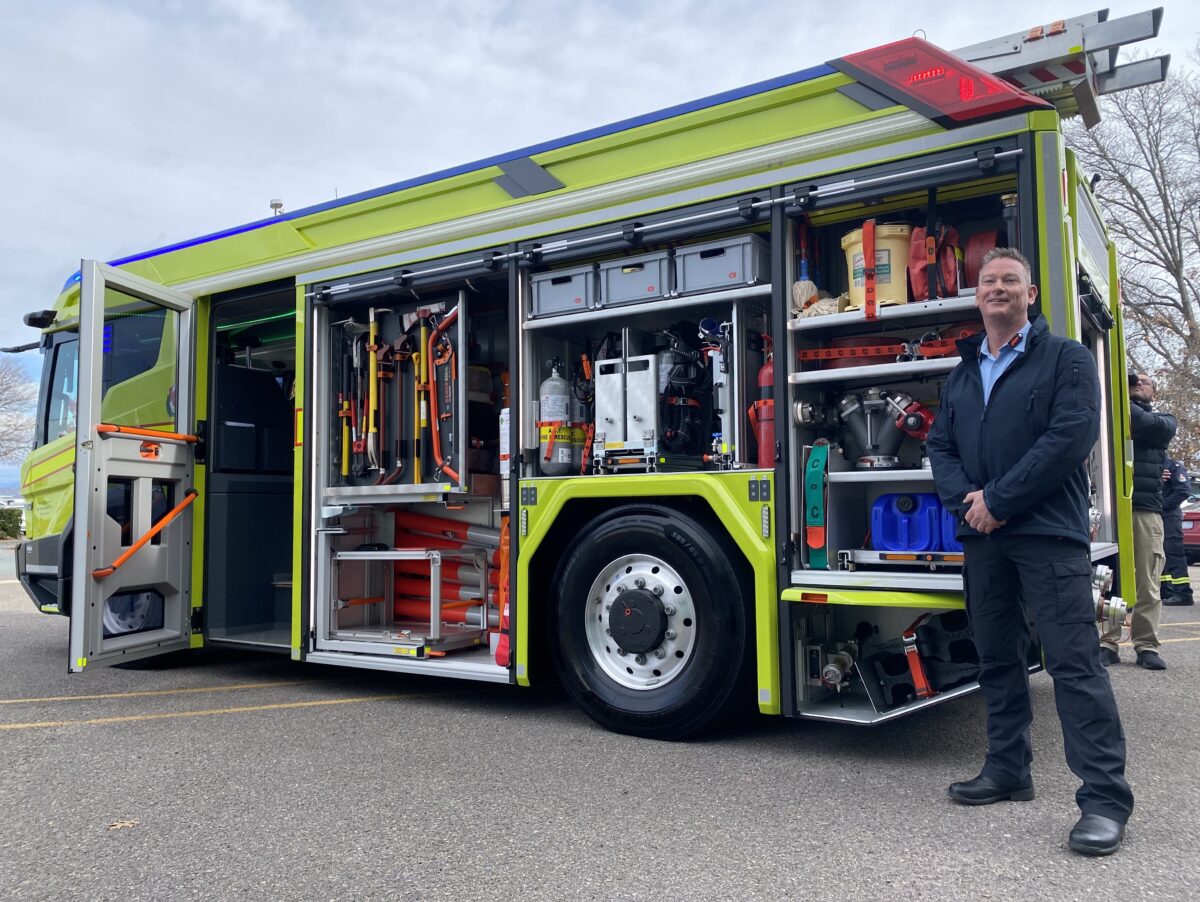
ACT Fire & Rescue chief officer Matthew Mavity with the country’s first plug-in hybrid electric pumper, which has joined the ESA’s ranks. Photo: Claire Fenwicke.
Meet the newest member of the Fire & Rescue Team: the world’s first right-hand drive, plug-in hybrid electric pumper, capable of carrying a crew of four firefighters to any emergency.
It’s named after ACTF&R chief officer Matthew Mavity, who said it signified “ground-breaking technology” in fighting fires.
“It has been a bit of an epic journey [developing this during COVID], but I think looking at the truck, you’ll appreciate how ground-breaking this is and how necessary it is to lead and to step forward,” he said.
“We cannot rely on what has served us so far to lead us into the future.”
Austrian fire truck manufacturer Rosenbauer was contracted to deliver the project, which was designed with ACT firefighters to ensure their safety was front and centre.
The vehicle can hydraulicly lower to street level so firefighters no longer have to clamber into a cabin with their heavy equipment; the driver and station officer’s seats swivel to allow briefings to be held in the filtered, non-contaminated interior; high-efficiency particulate filters keep the air clean; the master control in the cabin allows for easy access to all the vehicle’s features and storage; the electric drive takes away the noise, vibrations and emissions from the work environment; storage is ergonomically designed; the vehicle has cameras rather than rear-view mirrors; and all tools are battery operated to remove high-pressure hydraulic injection hoses and reduce the risk of trips and falls.
The vehicle’s siren also contains a “rumbler” so that hearing-impaired people, those wearing headphones and in insulated cars, can feel the truck approaching as it heads to an emergency.
“Innovation is at the heart of this, and Rosenbauer has thought of it from the bumper bar to the pump at the back,” CO Mavity said.
“Sustainability is not just about emissions, but also the safety of firefighters … [it’s about] not injuring our people, giving them a long and safe career so that they can serve the community well.”
Traditional pumpers of this size cost about $750,000, while this one costs $1.5 million. It will save about $40,000 in diesel each year, and servicing costs are expected to be less.
Cost aside, CO Mavity said you couldn’t put a value on firefighter safety or helping the environment.
“We have to play a leadership role in combatting climate change and emissions, and sustainability is more than emissions: it is the longevity of firefighters, it is embracing technology to do things better and smarter, use less water, everything,” he said.
The pumper can carry 1500 litres on board and push out 3500 litres per minute when hooked up to a water source.
The battery can handle two hours of general duty driving and another two hours once the range extender kicks in.
“So basically, under normal driving conditions, about 1000 km,” CO Mavity said.
The tools can all be charged on board as well.
Once it has been registered within the month, driving and pump instructors will enter an intensive training period on how to manage the new vehicle. From there, the rest of the 400-strong workforce will also need training.
It’s hoped the electric truck will be on the road and responding to jobs in Canberra early in the new year.
While it’s in operation, data will need to be collected to ensure all its expectations are matched.
“Because this is so revolutionary, we need to get the telemetry out of the vehicle to see how it’s performing,” CO Mavity said.
“When we first looked at this vehicle, we compared its capabilities, on paper, with our busiest pumper in our fleet. From that data, we estimated it would only need the range extender twice a year, so we’ve now got to check that against real-life operation.”
Usually, it takes about a decade for Fire & Rescue to rotate its entire fleet, with one pumper replaced each year, but plans on how to replace every diesel pumper with an electric one will have to wait until the data is in.
Number 6 Station at West Belconnen will house the truck for now, as it has the charging infrastructure and room for training.
But the next best sites to instal the electrical infrastructure are being investigated.
“Some places are easier than others, so our newer builds like Aranda and South Tuggeranong, and certainly Acton when it’s completed, will have the infrastructure,” CO Mavity said.
“Some of the older localities where the grid is quite full, we’ll look at managing our way through that as we advance our way through the adoption of this technology more broadly.
“Rest assured, the future of all transport is electric.”












